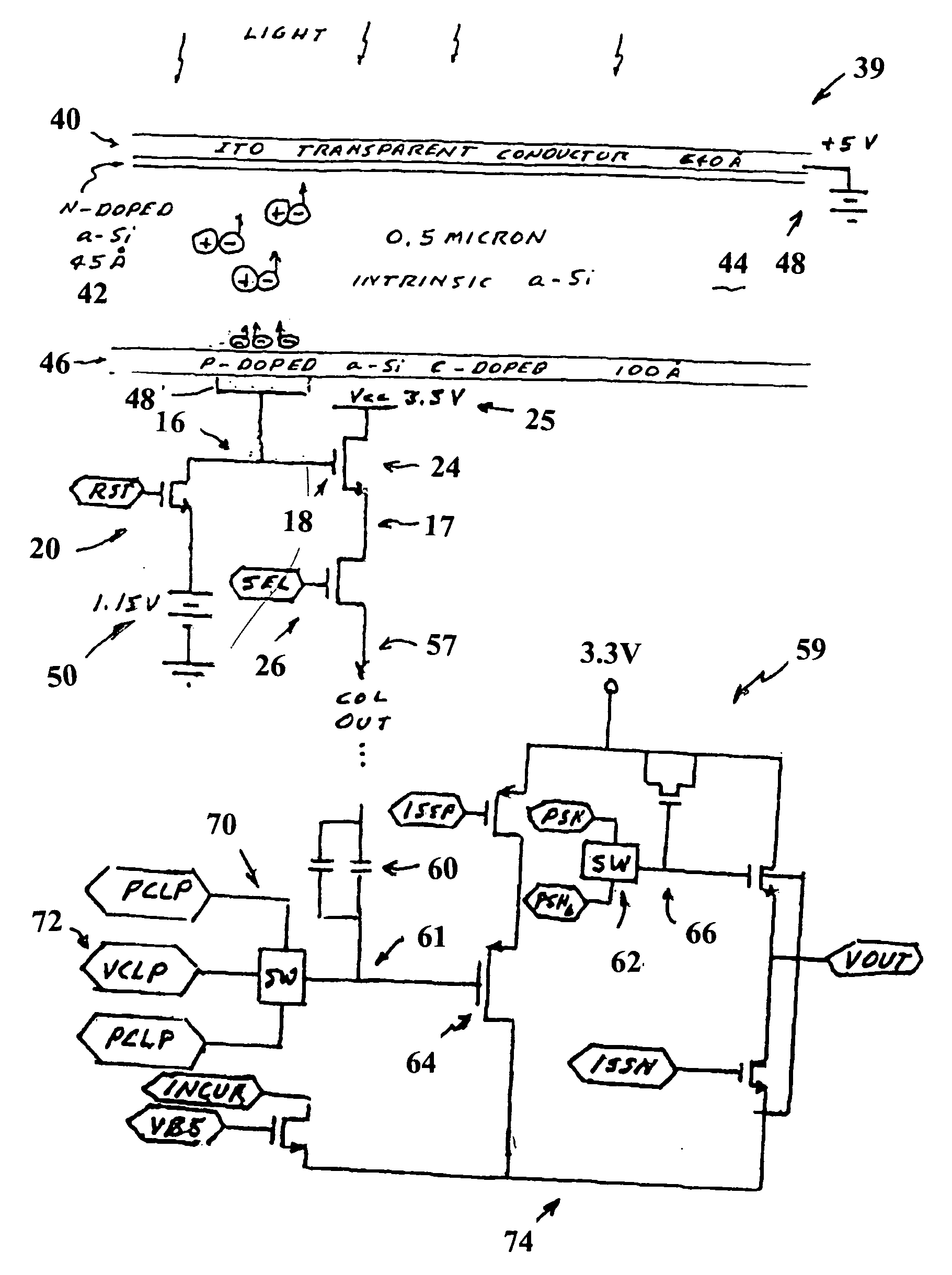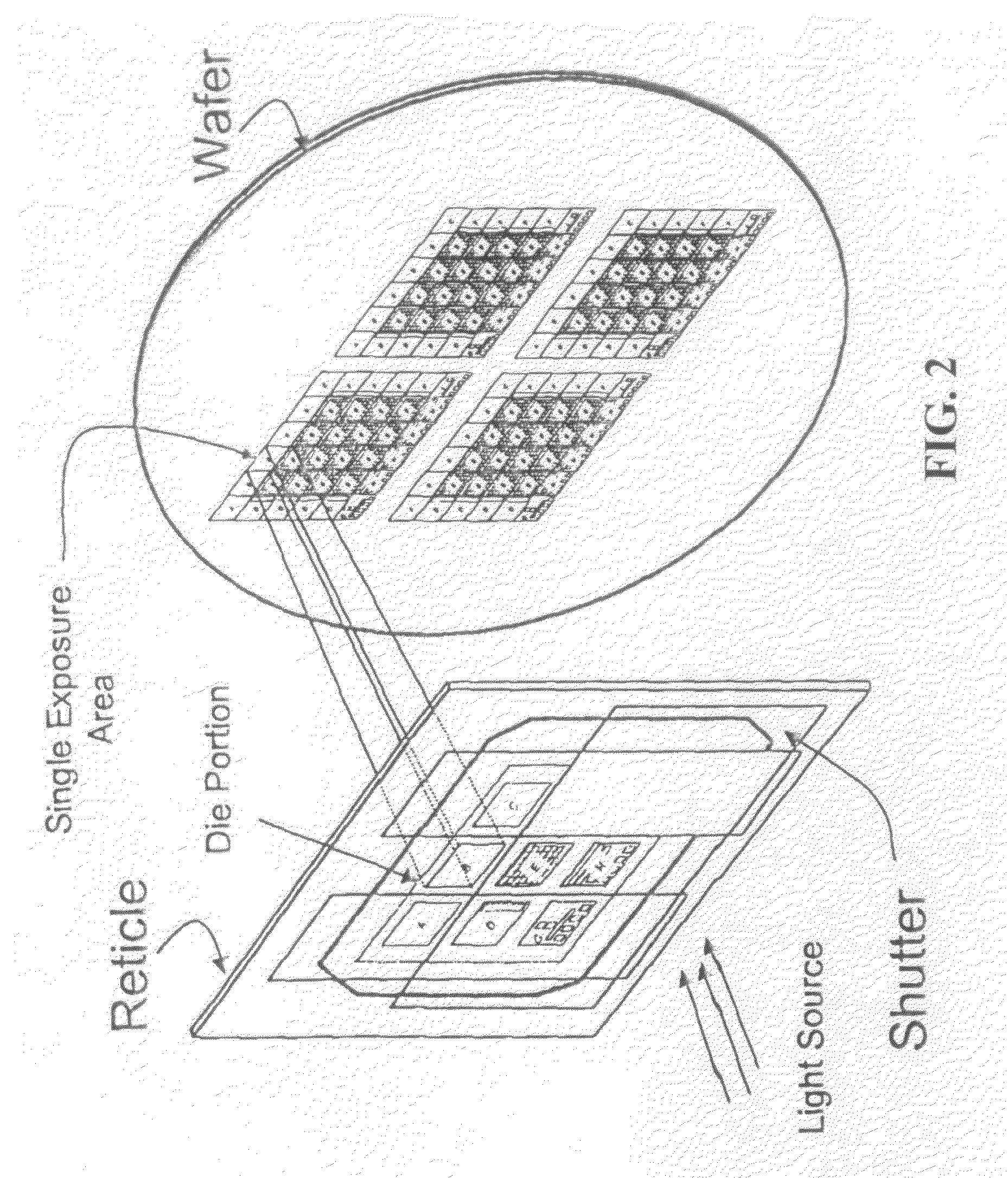Many million pixel image sensor
- Summary
- Abstract
- Description
- Claims
- Application Information
AI Technical Summary
Benefits of technology
Problems solved by technology
Method used
Image
Examples
Embodiment Construction
Many Million Pixel Sensors
[0047]The present invention provides CMOS sensors having a single continuous photodiode layer covering a pixel circuit array with at least about 25 million pixels. In preferred embodiments pixel sizes range from about 1.75 microns to 7.5 microns. Current standard pixel sizes are 1.75 microns, 3 microns, 5 microns and 7.5 microns. Applicants have fabricated and tested a sensor with 36 million 7.5 micron pixels and have described detailed designs for a much larger pixel with pixel counts as high as 250 million pixels or greater.
CMOS Lithographic Stitching for Very Large Pixel Arrays
[0048]In the parent patent applications listed in the first sentence of this application, Applicants and their fellow workers describe in detail Applicant's proprietary process of fabricating CMOS sensors by depositing a single continuous multi-layer photodiode layer on top of an array of pixel circuits to provide substantially 100 percent packing factor and minimize pixel sizes. A...
PUM
 Login to View More
Login to View More Abstract
Description
Claims
Application Information
 Login to View More
Login to View More - R&D
- Intellectual Property
- Life Sciences
- Materials
- Tech Scout
- Unparalleled Data Quality
- Higher Quality Content
- 60% Fewer Hallucinations
Browse by: Latest US Patents, China's latest patents, Technical Efficacy Thesaurus, Application Domain, Technology Topic, Popular Technical Reports.
© 2025 PatSnap. All rights reserved.Legal|Privacy policy|Modern Slavery Act Transparency Statement|Sitemap|About US| Contact US: help@patsnap.com



